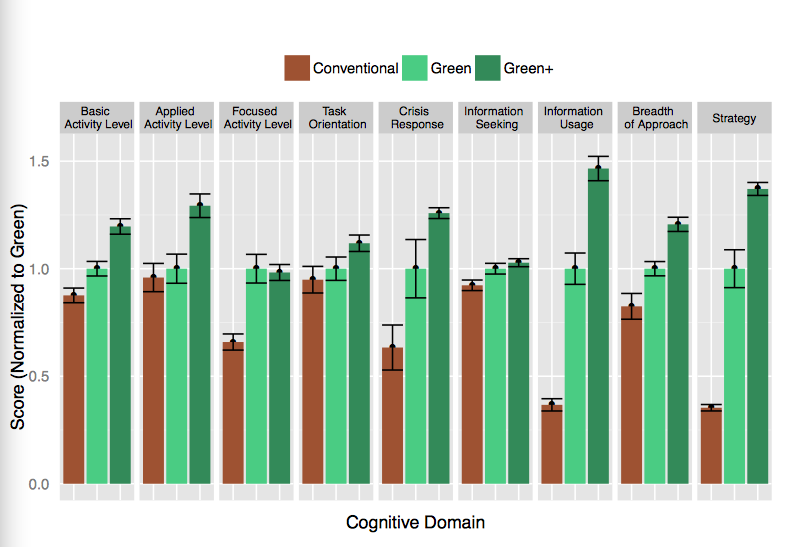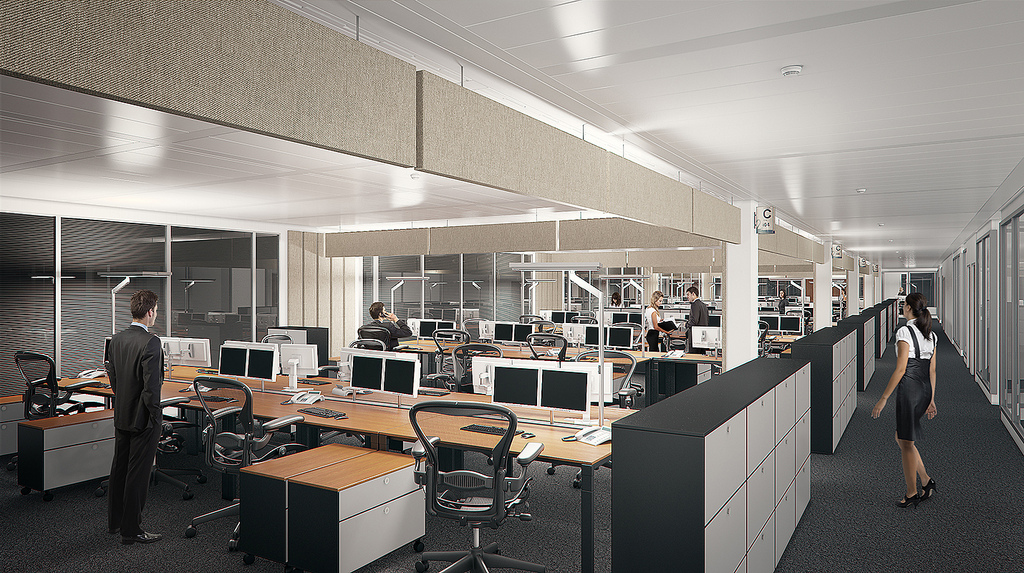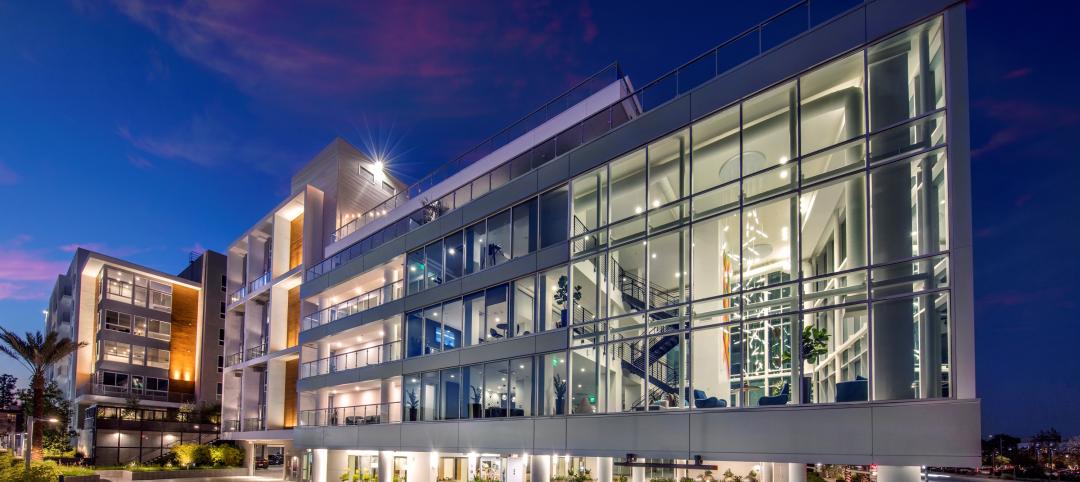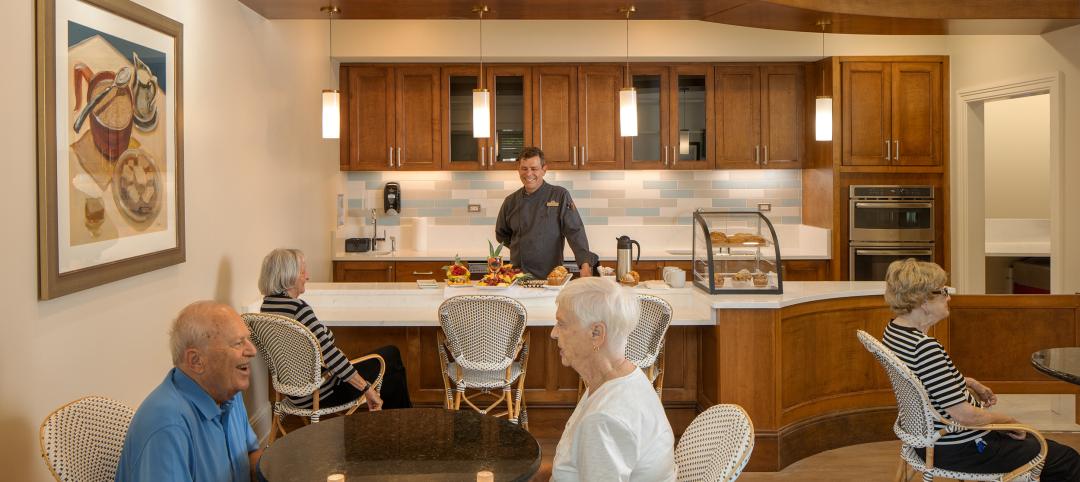Experts, including those in the AEC community, who have been insisting for years that indoor air quality affects occupants’ performance and health could soon have more ammunition to back up their claims.
The Wall Street Journal reports that Washington University at St. Louis last summer initiated what will be a yearlong experiment to test whether a newly constructed building, designed with easy access to stairways, natural daylight, and other “wellness” features, improves employees’ physical well being and promotes worker collaboration. The Journal also reports that the Well Living Lab, a research facility near the Mayo Clinic in Minnesota, early next year will begin clinical trials designed to assess indoor environments, with the goal of creating healthier spaces.
On October 26, Environmental Health Perspectives—a monthly journal of news and research published with support from the National Institute of Environmental Sciences (NIES), the National Institutes of Health, and the U.S. Department of Health and Human Services—released in advance of publication a peer-reviewed paper that details a recent study of 24 participants—architects, designers, programmers, engineers, creative marketers, and managers—who spent six full workdays in an environmentally controlled office space, blinded to test conditions.
The study population was restricted to non-sensitive persons by excluding current smokers and people with asthma, claustrophobia, or schizophrenia.
On different days, the participants were exposed to Indoor Environmental Quality (IEQ) conditions with high and low concentrations of volatile organic compounds (VOCs) that were representative of office buildings in the U.S. Additional conditions simulated a Green building with a high outdoor air ventilation rate and artificially elevated carbon dioxide levels independent of ventilation.
The study found that, on average, the participants’ cognitive scores were 61% higher on Green building days and 101% higher on days when the air ventilation was highest (so-called Green+ days), compared to the air quality during “Conventional” building days. “These findings have wide-ranging implications because this study was designed to reflect conditions that are commonly encountered every day in many indoor environments,” the study’s authors state.
 A recent study tested the cognition of 24 participants for nine activities, based on different levels of indoor air quality exposure. “Conventional” was air quality that's typical of most office buildings; Green+ indicated the highest level of air ventilation.
A recent study tested the cognition of 24 participants for nine activities, based on different levels of indoor air quality exposure. “Conventional” was air quality that's typical of most office buildings; Green+ indicated the highest level of air ventilation.
The study took place over two weeks in November 2014 at the Willis H. Carrier Total Indoor Environmental Quality Laboratory at the Syracuse Center for Excellence. The lab had two nearly identical office environments located adjacent to one another, each with 12 cubicles.
Cognitive assessment of the participants was performed daily using the Strategic Management Simulation software tool, a validated, computer-based test designed to test the effectiveness of management-level employees through assessments of higher-order decision-making.
The study found that the largest effects of conditions on cognition were seen for Crisis Response, Information Usage, and Strategy. For Crisis Response, for example, scores were 97% higher for the Green condition compared to the Conventional, and 131% higher for participants during Green+ days.
Conversely, “we found statistically significant declines in cognitive function scores when CO2 concentrations were increased to levels that are common in indoor spaces (approximately 950 ppm). In fact, this level of CO2 is considered acceptable because it would satisfy ASHRAE’s ventilation rate guideline for acceptable indoor air quality,” the authors state.
The paper, whose six authors worked under the auspices of NIES, was reviewed and approved by the Harvard T.H. Chan School of Public Health Institutional Review Board. The participant group was 42% male, 58% female. One-third of the group was between the ages of 20 and 30, and 25% was between the ages of 41 and 50. Ninety-two percent of the group was Caucasian, 54% has a college degree, and 63% holds professional jobs.
Related Stories
Headquarters | May 15, 2023
The new definition of Class A property
Dan Cheetham, Managing Director and Founder of FYOOG, believes organizations returning to a "hub and spoke" model could have a profound effect on properties once considered Class B.
Architects | Apr 27, 2023
Blind Ambition: Insights from a blind architect on universal design
Blind architect Chris Downey shares his message to designers that universal design goes much further than simply meeting a code to make everything accessible.
Collegiate Stadiums | Apr 4, 2023
6 examples of modern college training facilities
HOK discusses the future of college training facilities, with six design takeaways derived from a discussion between Dan Radakovich, Director of Athletics at the University of Miami, and Trevor Bechtold, Director, HOK’s Sports + Recreation + Entertainment practice.
Government Buildings | Mar 24, 2023
19 federal buildings named GSA Design Awards winners
After a six-year hiatus, the U.S. General Services Administration late last year resumed its esteemed GSA Design Awards program. In all, 19 federal building projects nationwide were honored with 2022 GSA Design Awards, eight with Honor Awards and 11 with Citations.
Codes and Standards | Feb 21, 2023
Standards vs Guidelines: The benefits of establishing process
The unsung hero of standards may be the impact they can have on speed to market and price of product and project, according to IA Interior Architects.
Multifamily Housing | Feb 11, 2023
8 Gold and Platinum multifamily projects from the NAHB's BALA Awards
This year's top BALA multifamily winners showcase leading design trends, judged by eight industry professionals from across the country.
University Buildings | Feb 9, 2023
3 ways building design can elevate bold thinking and entrepreneurial cultures
Mehrdad Yazdani of CannonDesign shares how the visionary design of a University of Utah building can be applied to other building types.
Student Housing | Jan 26, 2023
6 ways 'choice architecture' enhances student well-being in residence halls
The environments we build and inhabit shape our lives and the choices we make. NAC Architecture's Lauren Scranton shares six strategies for enhancing well-being in residence halls.
Senior Living Design | Jan 10, 2023
8 senior living communities that provide residents with memory care
Here are eight senior living communities that offer their residents memory care, an important service for residents who need this specialized care.
Healthcare Facilities | Dec 20, 2022
4 triage design innovations for shorter wait times
Perkins and Will shares a nurse's insights on triage design, and how to help emergency departments make the most of their resources.

















